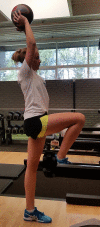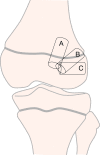2018 International Olympic Committee consensus statement on prevention, diagnosis and management of paediatric anterior cruciate ligament (ACL) injuries
- PMID: 29478021
- PMCID: PMC5867447
- DOI: 10.1136/bjsports-2018-099060
2018 International Olympic Committee consensus statement on prevention, diagnosis and management of paediatric anterior cruciate ligament (ACL) injuries
Abstract
In October 2017, the International Olympic Committee hosted an international expert group of physiotherapists and orthopaedic surgeons who specialise in treating and researching paediatric ACL injuries. Representatives from the American Orthopaedic Society for Sports Medicine, European Paediatric Orthopaedic Society, European Society for Sports Traumatology, Knee Surgery & Arthroscopy, International Society of Arthroscopy Knee Surgery and Orthopaedic Sports Medicine, Pediatric Orthopaedic Society of North America and Sociedad Latinoamericana de Artroscopia, Rodilla y Deporte attended. Physiotherapists and orthopaedic surgeons with clinical and research experience in the field, and an ethics expert with substantial experience in the area of sports injuries also participated. Injury management is challenging in the current landscape of clinical uncertainty and limited scientific knowledge. Injury management decisions also occur against the backdrop of the complexity of shared decision-making with children and the potential long-term ramifications of the injury. This consensus statement addresses six fundamental clinical questions regarding the prevention, diagnosis and management of paediatric ACL injuries. The aim of this consensus statement is to provide a comprehensive, evidence-informed summary to support the clinician, and help children with ACL injury and their parents/guardians make the best possible decisions.
Keywords: consensus statement; knee Acl; orthopaedics; paediatrics; physiotherapy.
© Article author(s) (or their employer(s) unless otherwise stated in the text of the article) 2018. All rights reserved. No commercial use is permitted unless otherwise expressly granted.
Conflict of interest statement
Competing interests: MC is a paid consultant for Arthrex. LE is the Head of Scientific Activities in the Medical and Scientific Department of the International Olympic Committee, has received fees for speaking from Smith & Nephew, has received research funding from Biomet and Smith & Nephew, has received funds for an employee from Arthrex and Smith & Nephew, has received royalties or fees for consulting from Arthrex and is an Editor of BJSM. MSK is a paid consultant for Best Doctors, OrthoPediatrics, Össur and Smith & Nephew, receives royalties, financial or material support from OrthoPediatrics, Össur, Saunders/Mosby-Elsevier and Wolters Kluwer Health–Lippincott Williams & Wilkins, is a paid member of the Steadman Philippon Research Institute, Scientific Advisory Committee, and is an unpaid board or committee member of the American Academy of Orthopaedic Surgeons, American Orthopaedic Society for Sports Medicine, Harvard Medical School, Harvard School of Public Health, Herodicus Society, Pediatric Orthopaedic Society of North America and Pediatric Research in Sports Medicine. RLaP receives royalties from Össur, Arthrex and Smith & Nephew. BR receives royalties from Elsevier, salary from American Journal of Sports Medicine and Orthopaedic Journal of Sports Medicine, and holds stock in Merck and Johnson and Johnson. RSe is an unpaid board member and President of the European Society of Sports Traumatology Knee Surgery and Arthroscopy (ESSKA). TS works as Scientific Manager in the Medical and Scientific Department of the International Olympic Committee.
Figures










References
MeSH terms
LinkOut - more resources
Full Text Sources
Other Literature Sources
Medical
